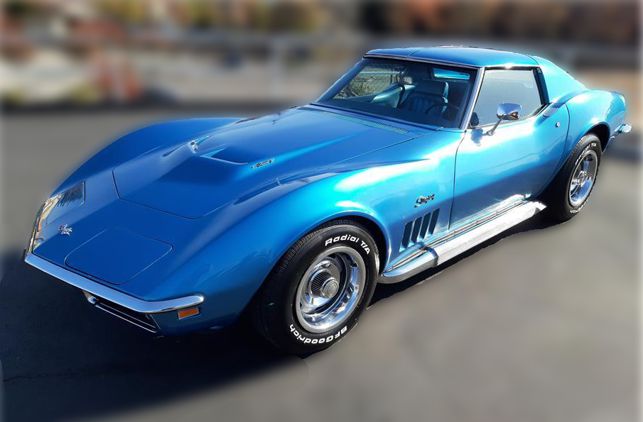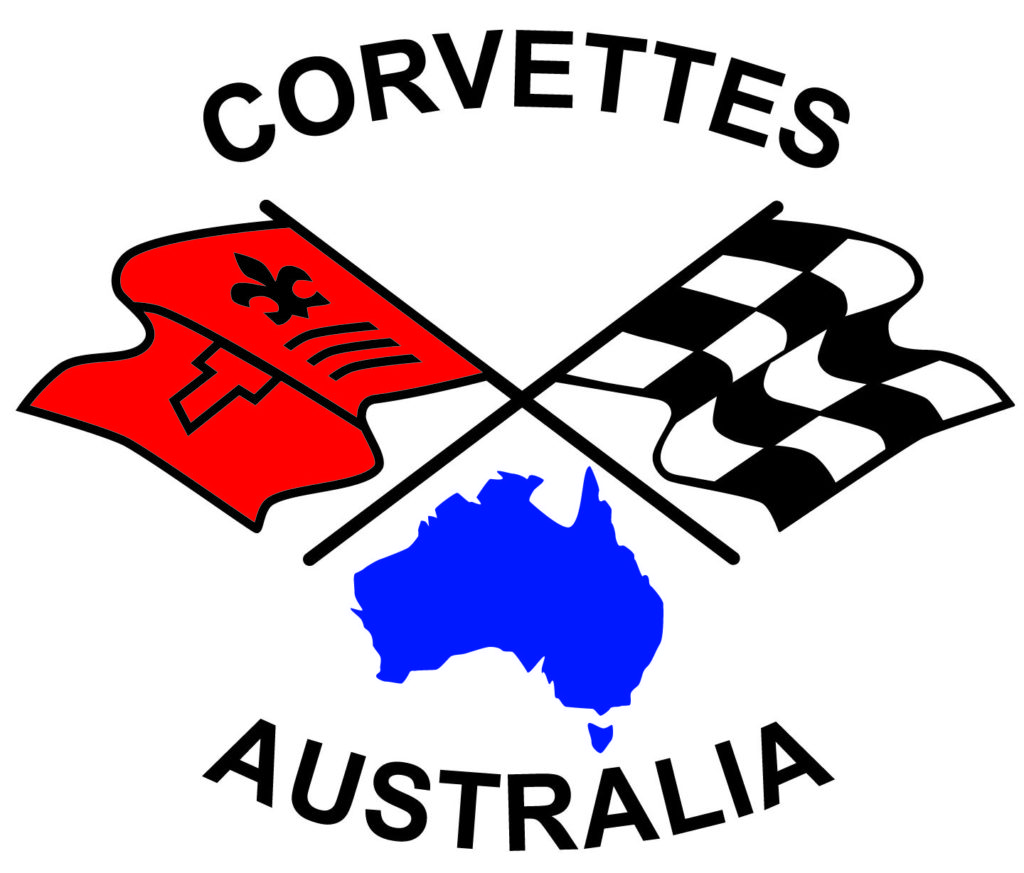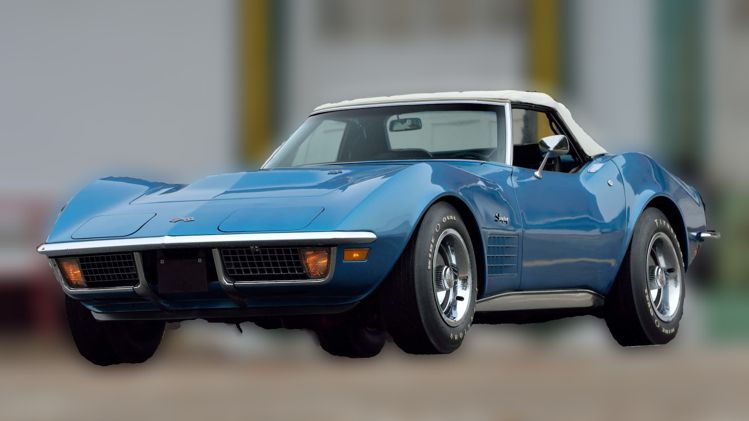The third generation Corvette (C3) began production in 1967 for the 1968 model year introduction. The chassis and engines were basically carry-over from the C2 with new designs for the body and interior. The name “Sting Ray” was also carried over for C3 but this time as a single word “Stingray”, but this was only from 1969 to 1976.
The car remained in either coupe or convertible models, with the coupe version featuring removable “Targa-tops” as well as removable rear windows. The convertible model came with a soft-folding top, with an optional removable hardtop featuring a glass rear window being also available. The pop-up headlights were operated by vacuum, rather than electrically as per the C2 cars. The battery was relocated from the engine bay to a compartment behind the seats.

In 1969 the 327 engine was replaced by the 350 small block, although the advertised horsepower was unchanged. The big block line-up remained as per the 1968 model. Changes for the 1969 model included the “Stingray” badging being returned to the car, wheels widened from 7” to 8” and white-lettered tyres added, the door handles changed from the two-part finger plate and release button a single piece finger plate that also operated the lock. Headrests became standard, the steering wheel was reduced from 16 to 15 inches, and for one year only, side exhaust pipes were made optional. The ignition switch was moved from the dashboard to the steering column, making the steering lockable.

The MY71 Corvette was almost visually identical to the 1970 car. Engines were legislated to run with lower compression ratios, resulting in lower power outputs. The entry level 350 engine now produced just 270 horsepower, while the LT1 was down to 330 horsepower. The LS5 was still available, but the horsepower output was reduced to 365. The big block LS5 engine remained, although it could not be sold in California.
1972 saw the last of the full chrome bumpers. This year saw the introduction of the SAE method of measuring horsepower and was largely responsible for the advertised horsepower of all cars being much reduced. For instance, the standard 350 cub. in. engine installed in the Corvette was rated at just 200 horsepower.


Mechanically, the chassis was carried-over from the second-generation model, with just minor revisions. Engines for the 1968 model year were carried over from the 1967 model, as were the manual transmissions. However, the 2-speed Powerglide automatic transmission was replaced by the 3-speed Turbo Hydramatic (TH400). The top of the line engines included the L79 small block 327 engine (350 horsepower), the L71 big block 427 with tri-power (435 horsepower), and the L89 big block, which was an L71 with lightweight alloy heads. At the top of the heap was the mighty L88 427 engine with 12.5:1 compression ratio.

For the 1970 car, fender flares were introduced to reduce damage from wheel thrown debris. The car also gained eggcrate grilles, which matched the front fender side vents. Changes to these vents became a a method for GM to distinguish between the different model years. Exhaust outlets changed from round to a rectangular shape. New engine options included the LT1, a solid lifter, 4-bolt block engine delivering 370 horsepower. The big block selection was down to one engine, the LS5. Engine capacity increased to 454 cub inches, and the engine delivered 390 horsepower. An LS7 engine, delivering 460 horsepower, was advertised, but is believed to have never made it to a production car. This was a short production year with a late production start in January ’70, resulting in only 17,316 MY70 cars being built.

The 1973 Corvette began the trend to making the car a touring sports car, as distinct from a muscle car. Although the MY73 Corvette retained the chrome rear bumper, the front bumper had to be redesigned as an energy absorbing bumper to meet federal safety standards. Engine choice comprised of the entry level L48 350 with 190 horsepower, and an uprated 350, the L82, which delivered 250 horsepower, or the LS4 big block with 275 horsepower.
The 1973 Corvette was the last to feature a chrome bumper – in this case just the rear one. And so ends the era of the classic Corvette chrome bumper models. These cars are now the most desired of the third generation (C3) Corvettes.


2 Responses
Hi, I was hoping you might know if the C3 1972 chrome bumper model, which I own, if it was common to have red interior with red bodywork? Would you know or haveany idea how many were produced in this colour scheme. As I get lots of comments and we be good to know…
Cheers, Will
Oxfordshire UK
I’m afraid it’s almost impossible to get the numbers for the different combinations. There may be some numbers available in the Corvette Register but they would be somewhat unreliable.
I can tell you Red on Red was a factory ‘suggested’ colour combination. In fact Blue was the only interior colour not suggested for the Mille Miglia Red exterior. There were 2,478 Mille Miglia Red Corvettes built in 1972, but I can’t find how many had Red interiors.
I agree the combination looks good.